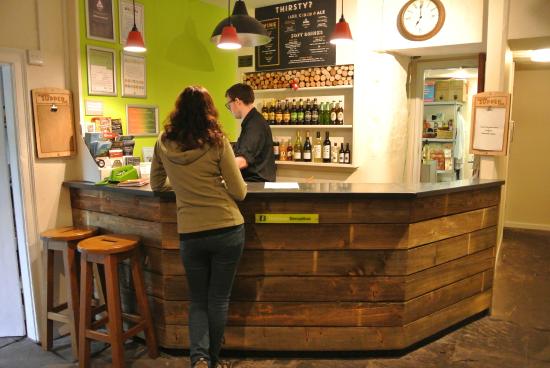Where virtualization shines - observing YHA
Last week I was on residential at a YHA hostel in the lakes, volunteering to help out with tasks and improve their facilities, it was a great trip and a break from the internet (as the hostel didn’t have WiFi available).

However; despite not having networking access for the public or staff, the POS desktop was still somehow connected to the internet, with what appeared to be GuestCentrix running, a contactless payment machine and access to email.
It appeared when logged in there was windows-inception with the local machine’s Windows 7 taskbar sat below the Windows 10 taskbar, showing that it was somehow connected, the blue status bar at the top gave away it was Microsoft’s remote desktop.
This move has also been done by the Australian YHA (documented here) and for businesses like the YHA it’s a great idea due to the many of their properties being located off the beaten track and not reached by FTTC schemes (the nearby pub’s wifi stats: download - 0.5Mbps, upload: 0.11Mbps, ping - 167ms), if all the PCs were set up individually it would’ve taken days to download Windows 10 for example.
Another advantage is keeping corporate software up to date, when the programmes used are updated they only need to be changed in one place as opposed to having to update them in their 200+ locations across England and Wales, as well as from a security perspective if you get theft of computers the data is secure as it isn’t on the device (assuming that the RDP session isn’t left unlocked of course) and customer data gets an extra layer of protection.
There are many situations where just using RDP is a bit of crap idea, like when my school previously used it for all computers (even where students were using graphically intensive programmes and watching videos) which it just couldn’t handle; but in the YHAs situation for just reservation applications and basic searches it is the perfect technology.